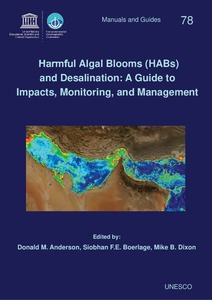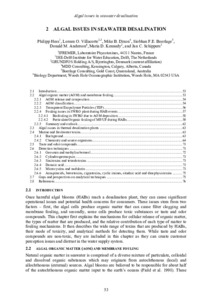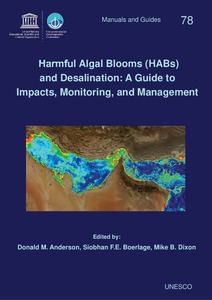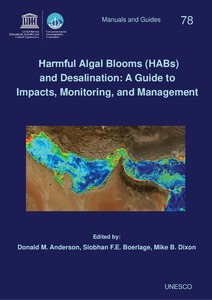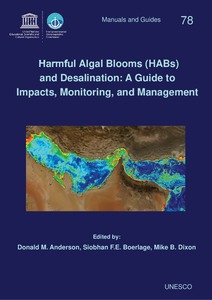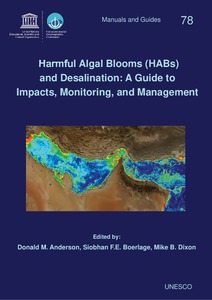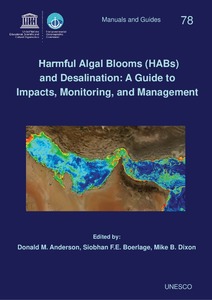Browsing HAB by Author "Boerlage, Siobhan F.E."
Now showing items 1-7 of 7
-
Algal biomass pretreatment in Seawater Reverse Osmosis.
Dixon, Mike B.; Boerlage, Siobhan F.E.; Voutchkov, Nikolay; Henderson, Rita; Wilf, Mark; Zhu, Ivan; Assiyeh Alizadeh Tabatabai, S.; Amato, Tony; Resosudarmo, Adhikara; Pearce, Graeme K.; Kennedy, Maria; Schippers, Jan C.; Winters, Harvey (Intergovernmental Oceanographic Commission of UNESCO, Paris, France, 2017)Harmful algal blooms (HABs) can result in a substantial increase in the organic and solids load in the seawater feed to be treated at a desalination plant. In this chapter, the removal of this material is addressed in ... -
Algal issues in seawater desalination.
Hess, Philipp; Villacorte, Loreen O.; Dixon, Mike B.; Boerlage, Siobhan F.E.; Anderson, Donald M.; Kennedy, Maria D.; Schippers, Jan C. (Intergovernmental Oceanographic Commission of UNESCO, Paris, France, 2017)Once harmful algal blooms (HABs) reach a desalination plant, they can cause significant operational issues and potential health concerns for consumers. These issues stem from two factors – first, the algal cells produce ... -
Case histories for Harmful Algal Blooms in desalination.
Boerlage, Siobhan F.E.; Dixon, Mike B.; Anderson, Donald M. (Intergovernmental Oceanographic Commission of UNESCO, Paris, France, 2017)Algae have long been an issue impacting desalination plant operation in areas prone to algal blooms or where macroalgae (seaweeds) and detritus became dislodged from the seabed. Previously and still today, operators and ... -
Harmful agal bloom-related water quality monitoring for desalination design and operation.
Boerlage, Siobhan F.E.; Villacorte, Loreen O.; Weinrich, Lauren; Assiyeh Alizadeh Tabatabai, S.; Kennedy, Maria D.; Schippers, Jan C. (Intergovernmental Oceanographic Commission of UNESCO, Paris, France, 2017)Characterization of the raw seawater at plant intakes and monitoring to detect poor water quality events including harmful algal blooms (HABs) is critical throughout the lifetime of a desalination plant. HABs can result ... -
Removal of algal toxins and taste and odor compounds during desalination.
Dixon, Mike B.; Boerlage, Siobhan F.E.; Churman, Holly; Henthorne, Lisa; Anderson, Donald M. (Intergovernmental Oceanographic Commission of UNESCO, Paris, France, 2017)A major challenge in desalination is the removal of harmful algal bloom (HAB) toxins and taste and odor compounds (hereafter referred to as algal metabolites) using common treatment techniques. Removal of other compounds ... -
Seawater intake considerations to mitigate HAB impacts.
Boerlage, Siobhan F.E.; Missimer, Thomas M.; Pankratz, Thomas M.; Anderson, Donald M. (Intergovernmental Oceanographic Commission of UNESCO, Paris, France, 2017)Seawater intakes are a key element in the design, construction and success of desalination plants. Various intake options exist and are generally classified based on their abstraction depth. Surface ocean intakes abstract ... -
World Health Organization and International Guidelines for toxin control, Harmful Algal Boom management, and response planning.
Soltani, Alex; Hess, Philipp; Dixon, Mike B.; Boerlage, Siobhan F.E.; Anderson, Donald M.; Newcombe, Gayle; House, Jenny; Ho, Lionel; Baker, Peter; Burch, Michael (Intergovernmental Oceanographic Commission of UNESCO, Paris, France, 2017)Drinking water guidelines are designed to protect public health and the safety of drinking water supplies by suggesting safe levels for constituents that are known to be hazardous to health. The World Health Organization ...
 Repository of community practices in Ocean Research, Applications and Data/Information Management
Repository of community practices in Ocean Research, Applications and Data/Information Management
